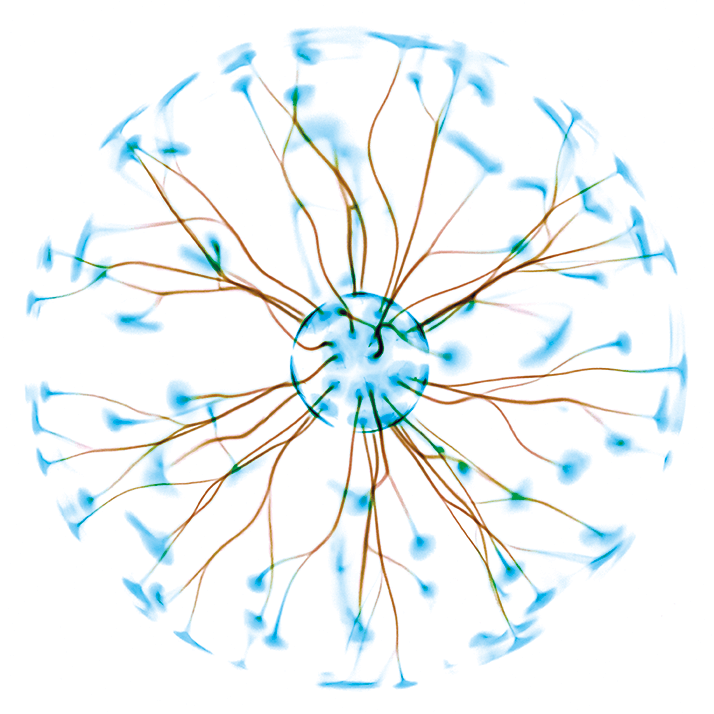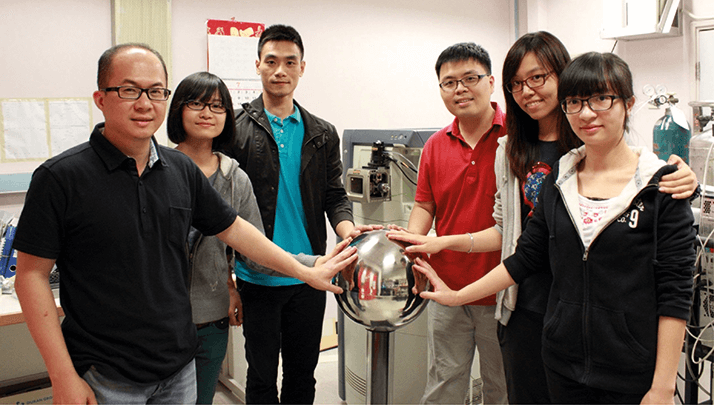“Why on Earth didn’t I think of that?” – you may ask yourself, as you read Kwan-Ming Ng’s account of the hair-raising moment he and colleagues at the University of Hong Kong decided to couple a Van der Graaff generator (physics plaything not progressive rock band) with mass spectrometry (MS) for whole living human body analysis (1).

Well, I guess there are three factors. First, ionization is one of the most important processes in MS analysis – that’s why development of new ionization techniques can lead to new research and application areas. For example, the development of electrospray ionization (ESI) and matrix-assisted laser desorption/ionization (MALDI) has opened up the field of MS-based proteomics. Second, direct analysis of the living human body is important to clinical diagnosis, biomedical research and forensic chemical analysis. And although X-ray radiography and magnetic resonance imaging (MRI) are common analytical tools for these purposes, MS offers high detection specificity and sensitivity. In over a century of MS development, the sample of interest has evolved from electrons, atoms, and small molecules to macro-biomolecules, such as proteins. However, no one has looked at a whole (living) human body. Third, while ambient MS technologies have been developing rapidly, direct analysis is still limited to small samples. I realized that the major obstacle would probably be the safe deposition of a sufficient amount of energy to the human subject to induce ionization of compounds on the surface of the body. Eventually, I came up with the idea of using megavolt electrostatic potential, which can charge up samples as large as a human body efficiently. I thought that the successful development of this new ionization method could potentially lead MS technology into new fields, such as real-time metabolite and explosive analysis for clinical diagnosis and security purposes, respectively.
The ionization method is simple in both concept and instrumentation. Our method combines two seemingly unrelated scientific instruments for direct analysis of chemicals on the surface of the living human body. In classical Van de Graaff electrostatic charging experiments, surrounding molecules in the air, such as water, nitrogen and oxygen molecules, can be easily ionized. Before the experiment, I expected only these external ions to be detected by the mass spectrometer. I was surprised that compounds on the skin surface and in breath gas could both be directly ionized by the electrostatically charged human body at megavolt potential. The MS method can analyze a wide diversity of samples and ionize different types of compounds; therefore, it is applicable to solid samples, such as drugs and explosives; liquid samples, such as flammable organic solvent; and gaseous samples, such as breath gas. Varied compound types, such as natural cocaine alkaloid, synthetic aromatic explosives and organic solvent, and volatile food and beverage ingredients can all be ionized and detected.

Well, the first big challenge was identifying a safe and powerful electrostatic generator capable of applying a megavolt electrostatic potential in a living (and willing!) human body – that’s what lead me to the Van de Graaff generator. Once that had been decided, we had to carefully consider the delicate electronic devices and components within the MS system. Proper precautions, such as solid electrical grounding, were also critical to operate the Van de Graaff electrostatic generator close to the MS.
Some of them were surprised that this unlikely coupling could be used for the direct analysis of substances originating from a living human body. In general, I think they have discovered that despite the technology being simple in principle, it has great potential in analytical applications. It can make mass spectrometry analytical capability more accessible to many different samples.
Yes. Better electrostatic shielding needs to be designed for the Van de Graaff generator to prevent accidental electrostatic damage to nearby objects, including the mass spectrometer, as noted above.
I think our new MS method will stimulate the development of different analytical applications relating to living organisms. For example, the technique has great potential in biomedical research for real-time chemical analysis of breath gas during treatment or experiments. Real-time breath gas analysis and skin surface chemical detection are also useful for forensic chemical analysis, such as noninvasive drug detection. Apart from direct chemical analysis of substances on living humans, the method also has potential for the direct detection of agrochemicals, illicit drugs, and other dangerous compounds in food, pharmaceuticals and luggage, respectively.
Some medical electronic implants/devices are sensitive. For example, the strong magnetic field employed in MRI would damage pacemakers; likewise, our MS method is not suitable for the analysis of people with medical electronic implants or devices because of the high electrostatic potential involved. Samples that contain sensitive electrical components are not recommended for such direct sample analysis.
A US provisional patent has been filed for this new MS method and its analytical applications. My research team is currently exploring different analytical applications from direct sample analysis and direct living organism analysis to coupling the technique with other analytical technologies.
My team continues to optimize the detection sensitivity of the method for the detection of different compounds, such as agrochemicals and biochemicals, from food and biological tissue samples. Moreover, we will also conduct more research to investigate the mechanism(s) of the ionization processes that occur under such high megavolt electrostatic potential conditions.
References
- Kwan-Ming Ng et al., “Direct Analysis of Large Living Organism by Megavolt Electrostatic-Ionization Mass Spectrometry”, J. Am. Soc. Mass Spectrom. 25 (9) 1515-1520 (2014).




